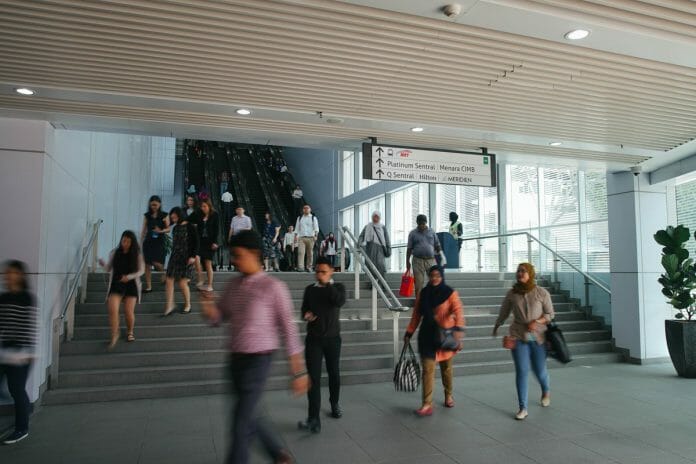Economic, social, and cultural changes brought about by the COVID-19 pandemic are remaking the world of work in societies across the globe, and Malaysia is no exception. While businesses are scrambling for a return to normalcy, it is becoming increasingly apparent that many employees are less keen to do so.
The mass departure from traditional work cultures in favour of a more flexible one is pushing businesses to re-assess their talent strategies amid an environment of skilled labour scarcity, and has given rise to — or more accurately, skyrocketed the visibility of — contingent workforces.
Hired for a finite duration or on a renewal basis, these temporary staff have traditionally been used purely to meet seasonal manpower demands, such as for ad-hoc campaigns or special projects. However, as graduates come of age amidst profound shifts in the nature of employment and many full-timers begin to migrate to flexible work, the modern contract worker is very much more. They are likely to be highly skilled at a particular niche, or are able to offer specialised experience in a particular line of work.
What started off simply as a means of filling headcount gaps has now become something else entirely: a regularly revolving stream of skilled employees that complement a company’s existing full-time workforce.
On the surface, local employers have been quick on the uptake of contract workers — 64% of Malaysian companies surveyed in 2022 are already adopting contingent workforces, citing talent shortages and the need to be agile in adapting to modern hiring practices. But as with all things that are implemented at speed, we run the risk of letting industry confidence get ahead of us, instead of first assessing Malaysia’s preparedness to embrace this phenomenon.
The question is no longer “can we implement contingent workforces?”, but rather: What hurdles do we need to overcome to prevent contingent workforces from being just a flash in the pan? Do we have the right culture and infrastructure in place for businesses to truly make the most of contract talent?
Putting the ‘work’ in workforce
At first glance, contingent workforces seem to be the best of both worlds — beloved by both employers and employees for the flexibility it provides.
On top of access to a diverse, deep pool of talent (which may occasionally even be international), the contractual tenure enables company leaders and HR personnel to assess and adapt to business needs at any time. Hiring on a by-need basis can prove more cost-efficient than a large roster of full-time workers. This can be especially helpful in industries that are fast-paced and yet demand highly specialised workers, like healthcare or information technology.
Employees, on the other hand, enjoy the freedom it provides, working on their own terms and at times from anywhere in the world. By definition and virtue of being contractual, contingent workers bear less of an obligation to provide full, in-person commitment to their employers.
This “touch-and-go” model that defines the nature of contract work is a double-edged sword that, if left unchecked, will come with unintended side effects for employers: feeding a lack of cohesion between permanent and contingent employees. Working on a reduced or flexible schedule separate from their full-time counterparts can sometimes mean extra challenges in terms of ensuring all team members are aligned on internal goals.
Digital communication may help mitigate this somewhat, but team dynamics and company culture can be hard to foster purely through screens, texts, or perhaps the very occasional interaction when schedules align.
Keeping commitment and motivation levels high in a contingent workforce that is fleeting by nature requires employers to adopt strategies that are more delicate than simply providing increased wages or better benefits. HR professionals and managers must be more willing to provide more robust training — not to harness talent, which contingent workers already have in spades, but to create opportunities for growth and development. Contract employees are likely to see value in personal attention and investment, especially when this remains scarce in many talent strategies.
It is also worth remembering that the vast majority of modern contingent employees are comprised of millennials and Gen Zs who are avid users of technology. The burden falls then to employers to upskill themselves and be similarly equipped: not just with the correct tools, but the knowledge to use those tools efficiently and effectively. This could range from everyday, ‘on-ground’ technology like productivity suites and virtual collaboration tools, to digitised business-level systems such as integrated HR solutions and flexible employee benefit marketplaces.
Navigating a changing world of work
As business operations continue to adapt and transform, so too should approaches to employment. Truly coaxing out the full positive impact of contingent workforces necessitates a more holistic, total approach to workforce planning.
Rather than viewing contingent workers as an ‘external’ group that is outsourced ‘in addition to’ permanent employees, businesses need to start thinking of them as an alternative taskforce that is intended to complement existing full-time staff — filling gaps that the latter would traditionally be unable to, so that the cogs in the machine continue to run smoothly regardless of the hands on deck.
Malaysia admittedly still has some ways to go in terms of fully implementing the proper culture and infrastructure to put this in place. Local legislation can go a long way in terms of narrowing this gap. Classifying contract workers as ‘employees’ under national labour law, while a small change on paper, could more actively push companies towards supporting new ways of working and the people making those new ways work
Accommodating the rise of contingent workforces may pose its own unique set of challenges, but when done right, it can be greatly rewarding — reaping benefits that will change the landscape of Malaysian work and how we approach it for the better.
By Victor Phang, CEO and Founder of WorkSmartly









